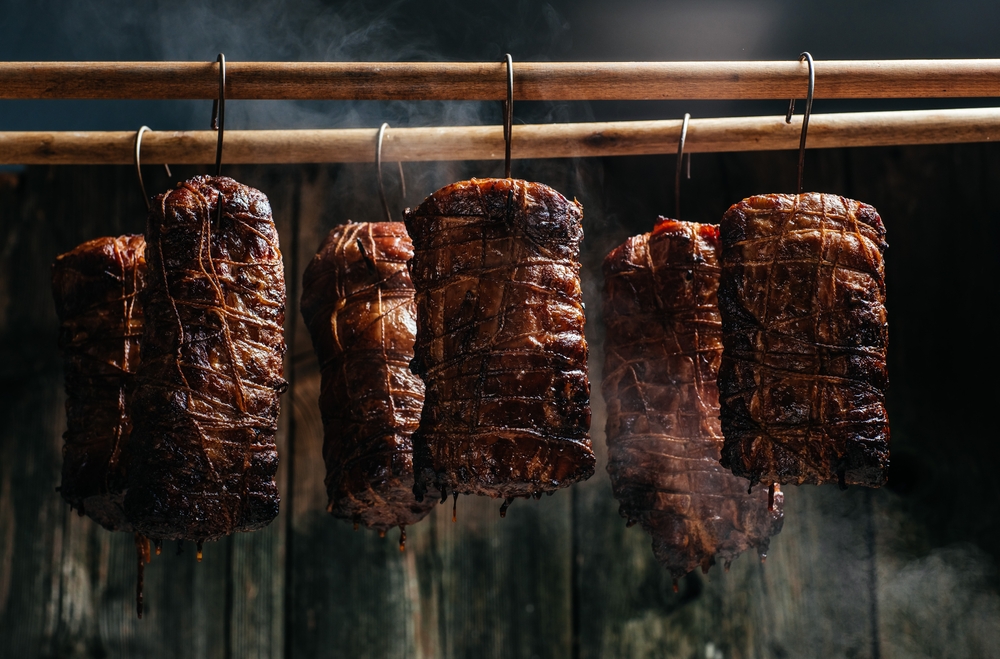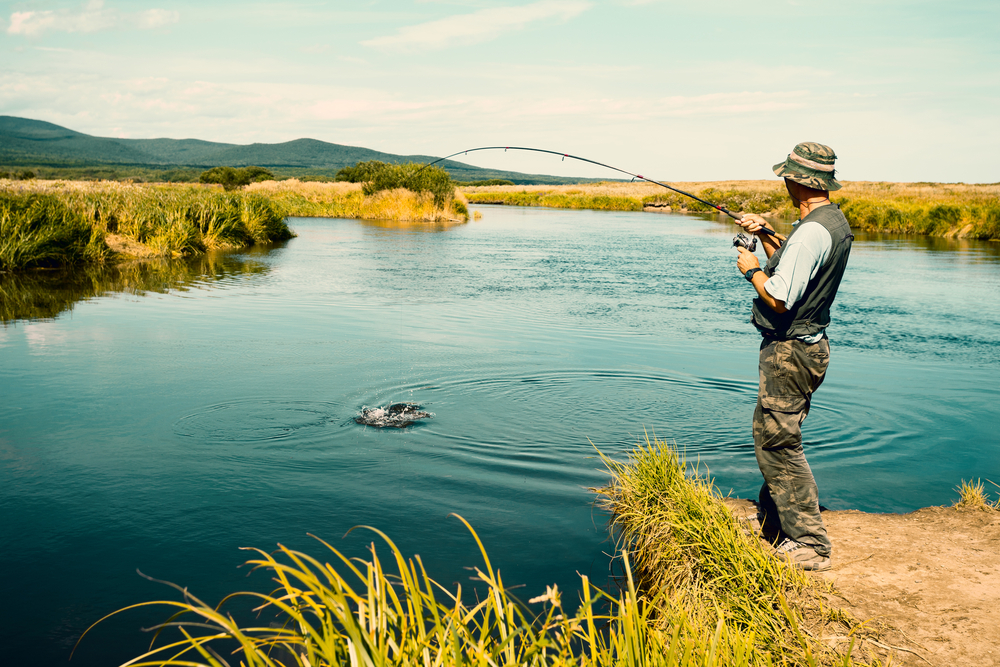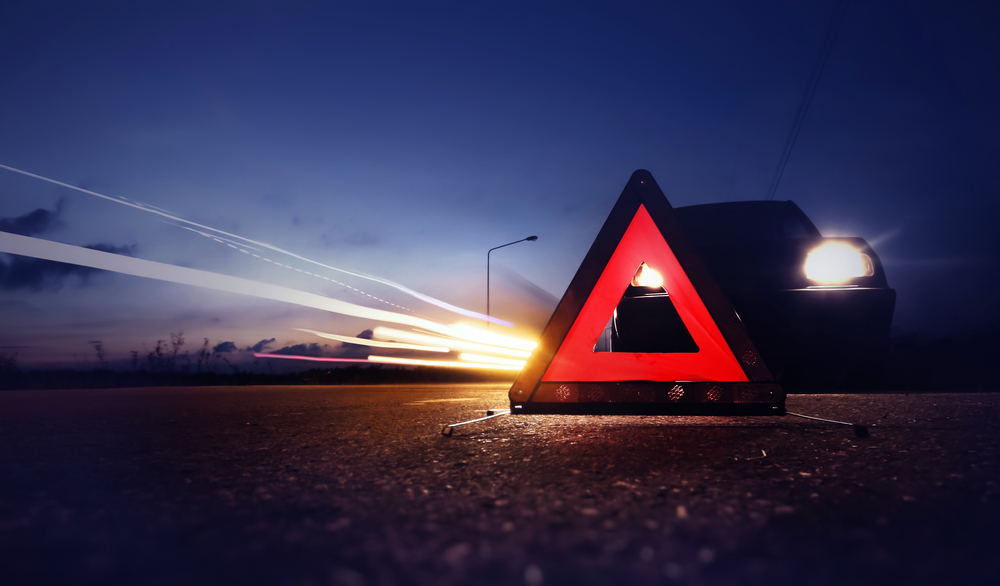When it comes to prepping for a survival situation, most tips will tell you to set up a base of operations. Your shelter can be in your home, a cabin in the woods, or a bunker buried deep underground, but the goal is usually to have somewhere you can fall back to and hunker down while you wait for the worst to pass. Ideally, having a survival shelter is a great way to weather most storms, but what do you do if that isn’t an option?
Maybe you’re too close to the coast, and there’s a tsunami on the way. Maybe massive shifts in the tectonic plates have started dumping hot lava into your backyard. Perhaps you live too close to a major city that’s the target of a nuclear strike. Maybe there’s a massive horde of zombies on the way, set to roll over your house like some undead Katamari.
Whatever the situation, if something is driving you from your survival shelter, you’ll need a ride. Here are some tips and tricks to help you turn your daily driver into the perfect bugout vehicle if you end up in a SHTF scenario.
1. Choose Your Daily Driver Carefully
The first step in equipping your vehicle for a quick escape is to be careful with the car you choose. There are a lot of things you’ll want to consider when selecting a bugout car, including but not limited to:
- Size
- Fuel type
- Fuel efficiency
- Storage space
- Two- or four-wheel drive
- Towing capacity
- How easy it is to maintain
Driving a Ford XB Falcon GT 351, like Max Max does, might seem like an awesome way to spend the apocalypse. But it isn’t the most practical option when you’re looking for a quick exit and a way to survive. Instead, you want something that is easy to handle, that won’t be hard to fuel, and something that will get you from point A to point B with a minimal amount of hassle.
Gasoline might be easy to get now, but that won’t always be the case if things fall apart. Most modern diesel engines can be converted to burn biodiesel – something you can make on your own, which will keep your bugout vehicle moving long after the gas stations close their doors.
2. Keep Up With Your Maintenance
The last thing you want in a SHTF scenario is to be stuck with a car that’s going to break down on you. The goal of having a bugout vehicle is that it will take you where you need to go. The easiest way to do that is to keep up with regular preventive maintenance. That means getting your oil changed, your tires rotated, and anything else that’s necessary, depending on the mileage. Some maintenance items, like having the timing belt replaced, only happen once every 100,000 miles.
This is also an excellent time to learn essential maintenance and repairs on your chosen bugout vehicle. You won’t be able to take your car to the shop if things turn pear-shaped. You don’t need to be a professional mechanic, but having some basic knowledge can keep you from ending up stranded.
3. Upgrade Your Undercarriage
Depending on the type of survival scenario you’re contending with, you may find yourself spending a lot of time off the road. Highways and cities choked with abandoned cars will make it challenging to navigate.
With that in mind, if you haven’t already chosen a vehicle that has four-wheel drive, you’ll want to add some undercarriage updates. Swap out your stock suspension for something a little tougher. Choose tires that work in both on- and off-road applications. These won’t be good for extreme offroading, but they can keep you from ending up with a flat because you ran over a particularly sharp rock.
4. Consider Some Engine Upgrades
Standard engines are great for your daily commute or making the trip to and from the grocery store, but they aren’t going to have everything you need for a survival situation. A few upgrades you might want to consider include:
- A snorkel to protect your engine from water damage in flooded areas.
- A cold-air intake to improve performance.
- A biodiesel conversion.
- A supercharger to give you a boost.
- An ECM tuner to help you overcome some of those stock computer settings.
The trick here is to find the balance between optimizing your bugout vehicle and not making it so complicated that you can’t keep it running in a SHTF scenario. Don’t rush into tech-heavy upgrades that might not even work at the end of the world.
5. Be Smart With Your Storage
One of the primary reasons for having a bugout vehicle ready to go is so you can traverse long distances without having to carry all your supplies on your back. That doesn’t mean you should throw things in the cargo area or trunk without some storage plan. The last thing you want is to dig through piles of junk for some essential item when time is running out.
The type of vehicle you have will determine the storage solutions you can manage. You wouldn’t set up the inside of a compact car like you would the interior of a work van, or vice versa. Be smart about your storage. Everything should have its place, and you should be able to find whatever you need at a moment’s notice.
6. Don’t Forget Extra Fuel
Stopping at gas stations isn’t generally an option if things turn sour and the world starts to fall apart. Regardless of the type of vehicle you choose for your escape, you will need to keep it powered, which means storing enough fuel for the trip.
Try to attach fuel containers to the outside or top of your vehicle. If you must store them inside the vehicle, ensure you have adequate ventilation to prevent fume buildup from creating a fire hazard or making it dangerous to breathe.
7. Adding Some Armor
You never know what you might encounter out in the wasteland, so the best rule of thumb is to be prepared for anything. Applying that to preparing your escape vehicle means you should consider adding some armor to the vehicle to protect yourself from attack.
Don’t add so much armor that you gut your fuel-efficiency or remove your bugout ride from the street-legal list. But adding armor to the doors and – if you can afford it – swapping out your standard safety glass for a bulletproof alternative can help keep you safe. The last thing you want to do is run into someone hostile – who likely has a gun – with nothing between you but a thin sheet of steel, glass, or aluminum.
Opt for subtle upgrades rather than a full-on Max Max road warrior rebuild. You don’t want people to target you because you’ve protected yourself. Blending in is often the easiest way to stay safe, and you can’t do that if you’ve turned the family mini-van into a tank.
8. Stash Some Maps
Ideally, GPS satellites will stay in orbit for years, even if the systems that support them on the ground collapse. Unfortunately, if those ground-based systems fail, you generally won’t access the information the satellites can provide. If you need to navigate, especially in an area you’re unfamiliar with, make sure you have a stash of good maps in your bugout vehicle. Replace these maps frequently to ensure you have the most up-to-date information available.
While you’re map shopping, consider picking up a compass and learning how to read it. You don’t need to navigate blind in a snowstorm or anything fancy like that, but some basic land navigation skills might save your life.
9. Have a Separate Bugout Bag
Ideally, your escape vehicle can serve as transport, storage, and shelter. But what happens if someone takes it from you? Don’t leave yourself stranded without food, water, or other supplies if you do happen to get carjacked.
In addition to the supplies stored in your vehicle, ensure you have a separate bugout bag packed and ready. It doesn’t need to be massive. Make sure you can carry it easily for long distances. Pack your necessities – food, water, survival supplies, etc. – and put it in a place where it’s easy to grab if abandoning your vehicle becomes necessary.
10. Install a Kill Switch
This is one thing “Mad Max: Fury Road” got right. When Max tried to make off with Furiosa’s war rig, he didn’t get very far before the kill switch shut down the engine. Install a kill switch in your escape vehicle and be ready to use it. You might end up with a fight on your hands, but it’s better to be able to fight for your bugout vehicle than to have to watch it drive away without you.
Kill switches can protect you from carjacking and theft, even if you’re not worried about the end of the world. So it might be worth it to install one now before we end up in a SHTF scenario.
Be Ready for Anything
This article isn’t intended to discourage you from setting up a survival shelter or caching your supplies there. We’re here to encourage you to take all the necessary steps to protect yourself and your loved ones if the end of the world happens – and that includes having an out if your shelter is no longer safe. Decide on your preferred bugout vehicle now and be ready for anything.


























































































a vehicle with a transponder key will work as a “kill switch” ,vehisl will not start without it,just remove key and take off on foot if u have to.your vehicle will get stripped, and looted, but the bad buys wont have a driving vehicle..
The older vehicles with the Kettering Ignition Systems would most likely be preferable to modern computer controlled engines when you consider what an EMP can do to that expensive electronic product.
I added a propane system to our bug out vehicle. It has a 30 gallon Dot approved tank mounted to the frame covered by the skid plates. I can also connect 5, 7 or 25 gallon tanks that can be mounted on the top or sides. Using propane causes a little less power, but I have never had a problem going anywhere that I could go with gasoline. As for the armor, I bought some soft armor and installed it inside of the door panels on the outer skin of the door. It is rated IIIa and will stop most sporting rounds. It was very expensive. I also carry a lot of spare parts and a case of motor oil and 2 spare filters. Parts I carry: Hoses and belts, fuses, starter, alternator, electrical wire(10,12 and 14 gauge), electrical tape, transmission fluid(3 qts), 2 gallons of 50/50 coolant, fuel filter, fix-a-flat, tire repair kit, bulbs for headlights, tail lights, and aux lights. This may seem to be over kill to some, but I will be able to fix just about anything that normally will break or need changing. I also have a 230 piece tool kit, and an air comp with different fittings.
With the gas and propane the vehicle will travel over 500 miles before I need to find fuel. More than enough to get to my “safe place”.
John have you think about adding the following?
1. Warm blankets and emergency blankets (Emergency Foil Mylar Thermal Blanket, 52″ Length x 84″ Width)
2. Emergency Survival Sleeping bags
3. Lighter/waterproof matches
4. Warm hats and gloves
5. Plastic bags
6. Tie wraps (large and small)
7. 2-3 long-burn candles
8. Cash (hidden)
9. Food (energy bars – buy from a grocery store)
10. Water (not during winter time)
11. Urinal (under seat)
12. Fire flare
13. Jumper cables & air pump
14. Flashlight (crank able)
15. Duct tape and hose clamps
16. Heavy-duty paper towels
17. Steel wire
18. At least one Sharpie marker (good 4 starting a fire, shave or burn the tip)
19. Portable Shovel
20. Portable Saw
21. Tripod for fire and the stainless-steel pot
22. Durable work gloves
23. Headlamp 12V
24. Toilet paper (compressed)
25. Foldable knife
26. Medical Emergency kit -check the expiration and content
27. Repair tools(incl. adjustable wrench)
28. A tire repair kit
29. Alcohol
30. Hand pump for gasoline